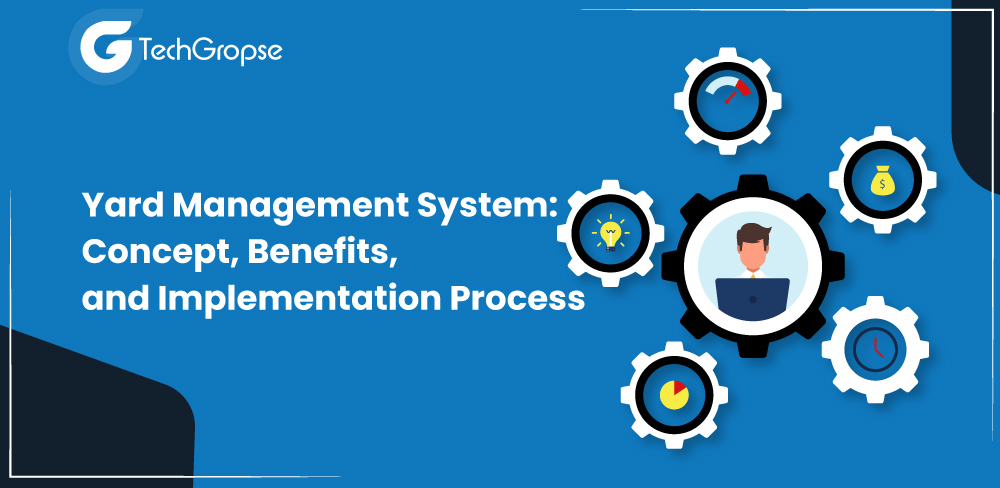Because of globalization, it is easier to cover the distance of thousands of kilometres to reach their customers. In simple terms, it made sure that the customers got their orders within committed time. However, in a highly competitive and ever-changing supply chain landscape, yard management is an arduous task. The yard management system is a boon if you have a manufacturing business and realize it is difficult to manage things.
Yard management system, transforming the efficiency of the supply chain to make the procedure smoother and instant. With the help of this software, you are able to manage and control the activities in a yard, such as inventory management, inbound/outbound movement and loading/unloading.
In today’s broadcast, we will discuss the YMS yard management system, its concept, benefits, implementation processes that help you understand all the works of the system and many more things to make management tasks easier and more efficient.
Table of Contents
Overview of Yard Management Software
The yard management system helps to manage yard operations in a distribution centre, manufacturing unit and warehouse. This software system is an agile and automated replacement for the traditional method included in yard management practices.
There is no doubt that many logistics companies use yard management systems to implement custom solutions that permit them to automate various operations as per their requirements. The software offers a complete view of vehicles in the yard and assists in the efficient management of inbound and outbound shipments.
The yard management system provides real-time information to logistic and supply chain businesses, which eases the procedure of moving trailers and assists them in minimizing operational inbound and outbound shipment costs. It gives permission for managers to view real-time data, which assists in preventing mishaps with a handy plan. Implementing YMS yard management software increases efficiency in their operation, works at higher productivity and manages on-time deliveries.
Key Advantages of Yard Management Software
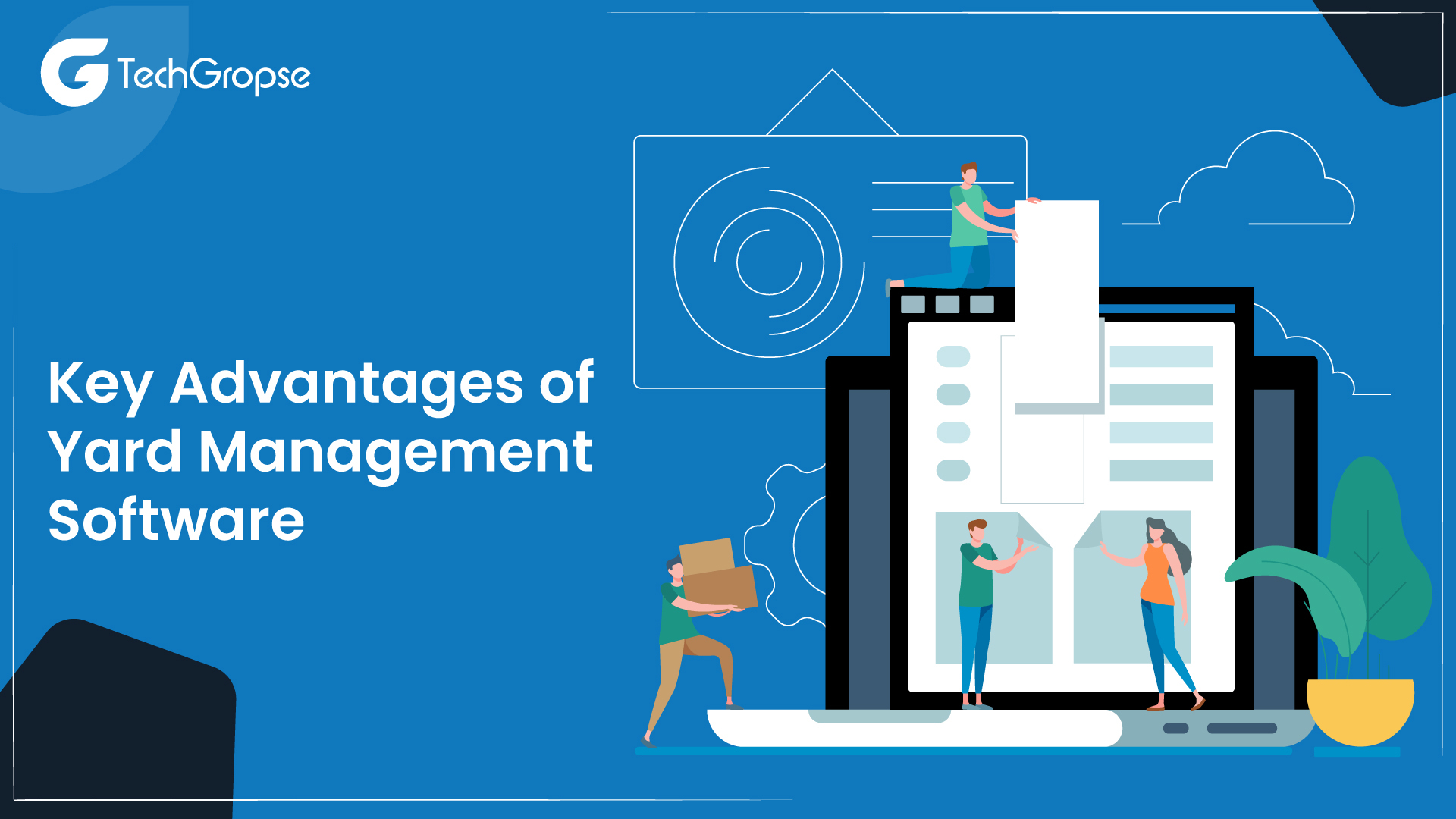
Implementing a “YMS” construction site management system can bring countless benefits to logistics and supply chain management businesses. Whether improving efficiency or visibility, a well-designed YMS can revolutionize how a company manages its yard operations. Here are some key benefits of adopting a construction site management system:
1. Improved Real-Time Visibility and Tracking
YMS provides real-time visibility into operations site movements, allowing companies to track the movements of trailers, containers and assets within yards. This increased visibility reduces delays, streamlines operations, and avoids bottlenecks.
Thanks to accurate and up-to-date information, decision-makers can make informed choices to optimize processes on the job site. As a result, it is beneficial to use the Amazon yard management system to manage things easily.
2. Improved Efficiency and Productivity
One of the key benefits of YMS is significantly improved operational efficiency. By automating manual processes, such as check-in/check-out procedures and trailer assignments, YMS helps reduce the time and resources required for these tasks.
This, in turn, improves overall productivity by minimizing idle time and improving resource allocation. This is the advantage of using a yard management system to easily manage things.
3. Optimize Use of Yard Space
YMS enables businesses to make better use of their yard space by providing information on available space and optimizing the allocation of trailers and containers.
Through smart planning and organization, businesses can maximize the use of their yard, reduce congestion and minimize the need for additional space.
4. Reduce Detention and Hold Times
Hold and hold times can impose significant costs on businesses in the logistics industry. YMS helps reduce these delays by optimizing the flow of trailers and containers in and out of the site.
By streamlining processes such as check-in and check-out, YMS reduces property wait times, helping to save costs and improve guest satisfaction.
5. Accurate Tracking of Trailers and Assets
With YMS, businesses can accurately track the location and condition of trailers and assets. This feature is especially useful for preventing theft, ensuring the security of high-value assets, and maintaining accountability throughout the supply chain.
The ability to monitor asset movements in real-time improves security and minimizes the risk of loss.
6. Improved Communication and Collaboration
A YMS facilitates improved communication and collaboration between various stakeholders, including suppliers, transporters, and warehouse teams.
Businesses can minimize miscommunication, errors, and delays by providing a centralized platform for sharing information. This collaborative approach fosters better relationships with partners and improves overall supply chain efficiency.
7. Compliance Management
Yard management systems are often equipped with features that help businesses stay compliant with industry regulations and safety standards.
This includes overseeing trailer inspections, ensuring loading and unloading procedures compliance, and document management. Compliance management reduces the risk of fines and contributes to a safer work environment.
8. Data-Driven Decision Making
YMS generates a wealth of data related to job site operations. This data can be analyzed to identify patterns, trends, and areas for improvement.
By leveraging analytics and reporting tools, businesses can make informed decisions to optimize processes, allocate resources effectively, and continuously improve overall supply chain performance.
Must-Have Features in Yard Management Software
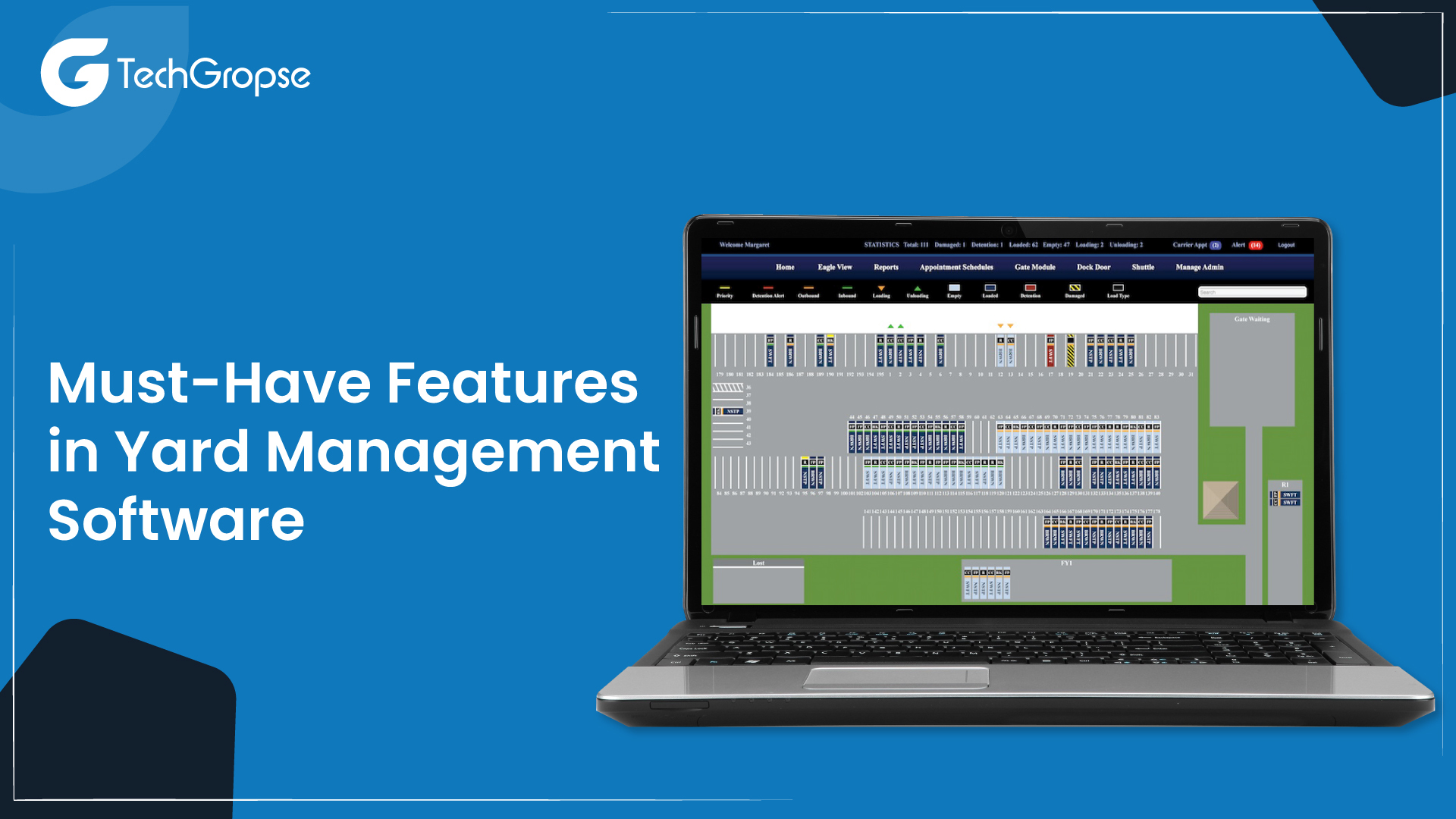
When it comes to using an app, users check the features first of all. Thus, it is necessary to check the functionality of the software. While getting one for you, you have to make sure it carries the following features:
1. Gate Management
The features make the inbound and outbound logistics of the procedure more automated and instant. Instead of feeding the data manually and the gate being opened and closed by a worker, the driver can feed the details to enter the gate. This self-service software then allows truck parking spots, automates gate opening, approves or declines appointments and verifies the information.
As a result, you have to make sure the software includes this feature. In order to add features to your own app, you have to contact professionals with experience building a baker yard waste management system.
2. Appointment Organization
The yard management system takes care of all the appointments for ferrymen, consignors and recipients. It will ensure that the fleet will inbound or deliver the logistics in the defined time. If there are chances of delay in the process, an appointment is edited, and all the parties are instantly informed about rescheduling. So, while searching for a yard management system, make sure that the software is equipped with this feature.
3. Analytics and Statistics
Yard management systems should also include analytics and statistical features. No doubt that it collects a range of data and statistics for the owner. Data plays a significant role in identifying the key performance indicators for the yard. The yard managers can instantly figure out the areas where the cost and time can be solved.
If you are building your own app, you must search for a software development company that helps you include advanced features in your application and make it attractive and unique.
4. Dock control
Yard management consists of a range of activities that have to be ensured daily. It consists of the administration of drivers, the time of the vehicle to get in for discharging or freighting, dock terms and much more. Making sure all this manually leads to a lot of time wastage and scope for human mistakes.
Henceforth, the yard management system makes the complete procedure automation errorless and instant. If you want to make your own app, you can also include this feature in your application. However, it is suggested to search for a mobile app development company that will assist you in every stage of the app development.
5. Real-Time Visibility of Yard Assets
A yard management system should also have this feature. No doubt that the yard manager has to be updated about all the logistics stored in the yard. Feeding the type and quantity of logistics in a system in a manual way might not require managers and supervisors to have a complete freight record and their location in the yard.
At the same time, it always assists in making sure that the correct freight is being loaded to the suitable trailers. Thus, while searching for such a system, you have to make sure that the software is equipped with this feature.
6. Task Management
This is another feature a yard management system should have. The collaboration in the workforce of hundreds working in the yard is more efficient. The managers and supervisors can allot the tasks, take the updates, and offer guidance in a couple of clicks. On the other hand, communication between different groups becomes even more productive. One can receive the allotted tasks on the phone, including the priority status of the tasks.
The Key Concept of Yard Management System
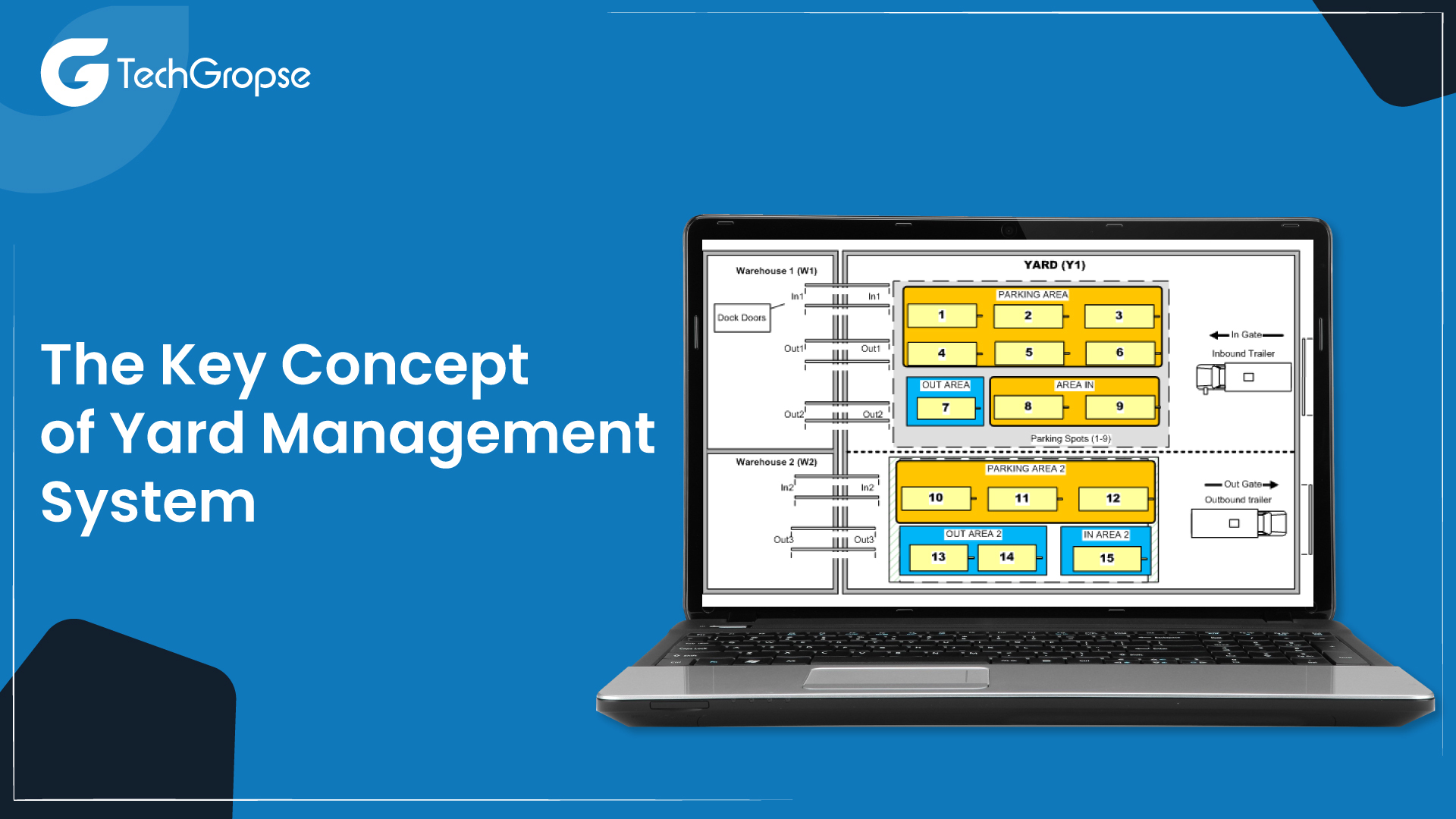
The concept of the site management system “YMS” revolves around optimizing and streamlining operations in the yard of a logistics or distribution center. Construction sites are an important element of the supply chain, serving as a bridge between transportation and warehouses.YMS is a technology solution designed to improve this important space’s efficiency, visibility and overall management.
- Real-Time Visibility
YMS provides real-time visibility into site activities, allowing parties to monitor the location and status of trailers, containers and other assets. This visibility is essential for making informed decisions, reducing delays and avoiding congestion on the job site.
- Automate Yard Processes
Manual yard management processes, such as check-in/check-out procedures and trailer allocation, are error-prone and inefficient. YMS automates these processes, reducing the need for manual labour and minimizing the risk of human error. Automation helps perform tasks faster and more accurately.
- Optimizing Yard Space
Efficient use of yard space is a central concept of YMS. By providing information about available space and flexible resource allocation, YMS helps businesses maximize the use of their yards. This optimization reduces congestion, minimizes the need for additional space and contributes to cost savings.
- Efficient Trailer and Asset Tracking
YMS allows businesses to accurately track the movement and location of trailers and assets in the yard. This tracking capability helps improve security, prevent theft, and ensure the efficient flow of goods throughout the supply chain. It also helps reduce downtime and downtime, thereby optimizing overall operational efficiency.
- Collaboration and Communication
Centralized communication and collaboration are key elements of YMS. By providing a unified platform for stakeholders, including suppliers, carriers, and warehouse teams, a YMS facilitates seamless information sharing. This collaborative approach minimizes miscommunications, errors, and delays in yard operations.
- Compliance Management
Ensuring compliance with industry regulations and safety standards is a fundamental aspect of YMS. The system helps in monitoring and managing compliance-related tasks, such as trailer inspections and adherence to loading protocols. This reduces the risk of fines and contributes to creating a safer working environment.
- Data-driven Decision Making
The concept of YMS emphasizes the generation and utilization of data for decision-making. The system collects data on yard operations, which can be analyzed to identify trends, patterns, and areas for improvement. Data-driven insights enable businesses to make informed decisions, optimize processes, and continuously enhance overall supply chain performance.
Yard Management System Implementation Procedure
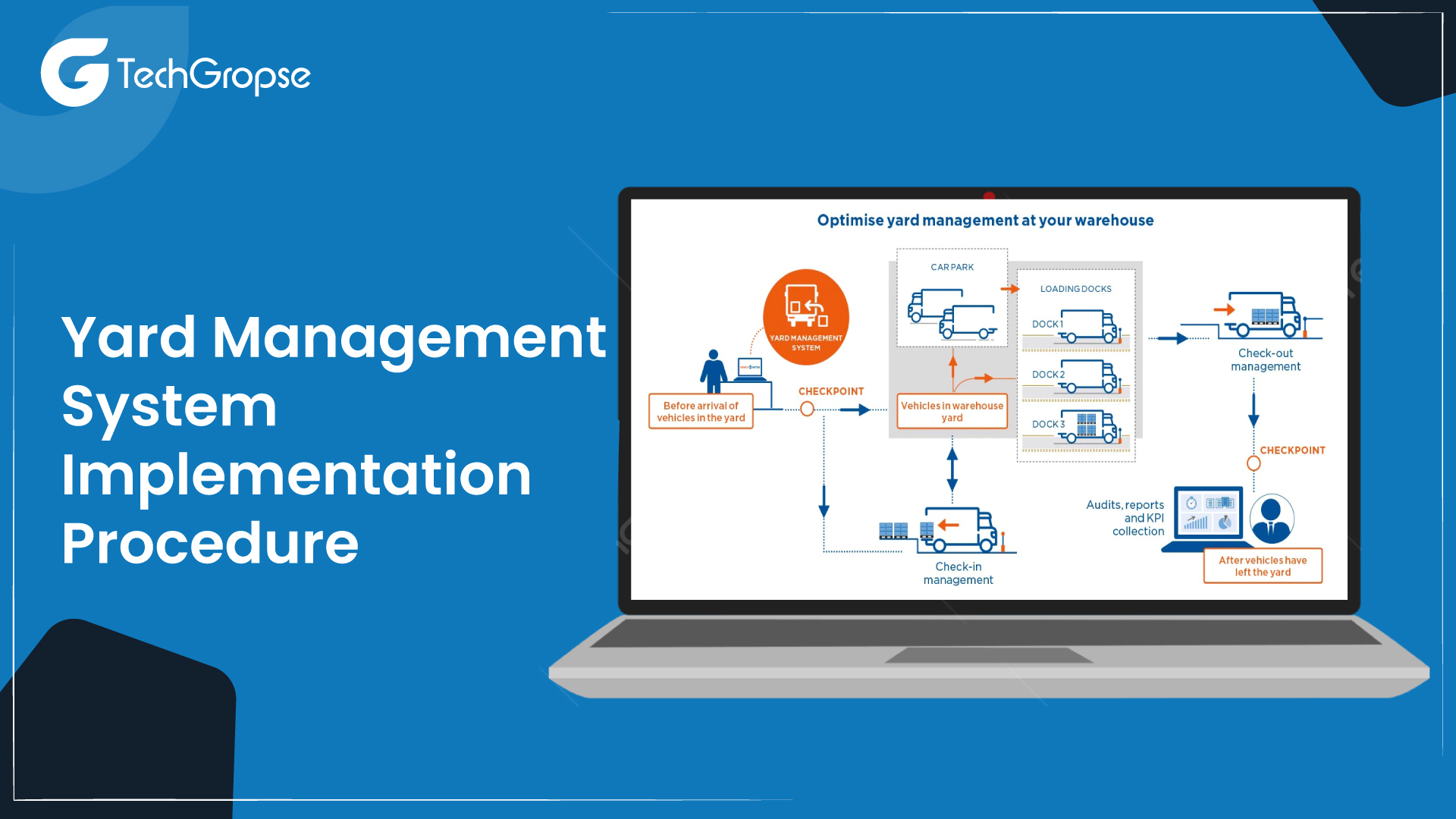
Of course, implementing a yard management system involves careful planning, coordination and integration with existing supply chain systems. The successful implementation of a yard management system can significantly enhance yard operations, improve visibility, and streamline procedures. Below, we share a step-by-step guide to the yard management system implementation procedure:
1. Assessment and Planning
Start by conducting a thorough assessment of the yard’s current operations. Identify weaknesses, inefficiencies and areas for improvement. Identify your goals and objectives for YMS implementation. This can include reducing downtime, improving space utilization and enhancing overall site efficiency. Develop a detailed implementation plan that outlines steps, timelines, and key performance indicators (KPIs) to measure success.
2. Stakeholder Engagement
Engage key stakeholders from various departments, including logistics, transportation, and IT. Collaborate with warehouse managers, transportation managers, and IT specialists to ensure that everyone is on board with the YMS implementation. Communication is crucial at this stage to address concerns, gather insights, and build support for the upcoming changes.
3. Vendor Selection
Choose a YMS vendor that aligns with your business requirements and goals. Evaluate different YMS providers based on their track record, features, scalability, and compatibility with your existing systems. Consider factors such as user interface, reporting capabilities, and the vendor’s ability to provide ongoing support and updates.
4. Customization and Integration
Work closely with the chosen YMS vendor to customize the system to fit your specific needs. Ensure seamless integration with other existing supply chain management systems, such as Warehouse Management Systems (WMS) and Transportation Management Systems (TMS). This integration is crucial for real-time data exchange and a holistic view of the supply chain.
5. Training and Change Management
Provide comprehensive training for employees who will be using the YMS. This includes yard operators, logistics staff, and IT personnel. Effective change management is essential to address resistance to new processes and technologies. Communicate the benefits of the YMS, address concerns, and emphasize the positive impact on daily operations.
6. Pilot Testing
Before full implementation, conduct a pilot test of the YMS in a controlled environment. This allows you to identify potential issues, validate the system’s functionality, and gather end-user feedback. Use the information obtained during the testing phase to make necessary adjustments and improvements to the system.
7. Deployment and full deployment
After successful pilot testing:
- Proceed with full deployment of YMS.
- Implement the system gradually, starting with a specific job site or facility and then expanding to other locations.
- Closely monitor implementation, resolve any issues, and ensure the system operates as intended.
8. Monitoring and Optimization
Once the YMS is fully implemented, set up a monitoring system to track key performance indicators and measure the impact of on-site operations. Analyze data generated by YMS to identify areas requiring further optimization. Regularly review and update systems to incorporate new features, address emerging challenges, and keep up with changing business needs.
9. Continuous Improvement
YMS implementation is not a one-time event; it is an ongoing process. Promote a culture of continuous improvement, where feedback is actively sought, and lessons learned from YMS implementation are applied to further improve processes. Regularly evaluate system performance and make adjustments to ensure its continued effectiveness.
Final Note
For logistic firms, a yard management system works like a boon, making it easier to manage things. However, it is essential to understand the concept of the software and its advantages for a business. Apart from that, you have to know its implementation process.
The information will be helpful to use the software and manage all the things easily. Moreover, you can build your yard management system by taking an idea from the information mentioned above. However, doing this job on your own will be risky. That’s why it is suggested to hire dedicated developers for this task. With years of experience and knowledge, they do the work more efficiently and conveniently.
FAQs
1. How does a construction site management system improve supply chain visibility?
A YMS improves supply chain visibility by providing real-time information about the location, status and movement of trailers and containers in the yard. This visibility enables better decision-making, reduces delays, and improves overall supply chain efficiency.
2. Can a construction site management system be integrated with other logistics and supply chain management systems?
Yes, YMS is often integrated with other systems such as warehouse management systems (WMS), transportation management systems (TMS) and enterprise resource planning (ERP) systems, to ensure the flow of Seamless and coordinated data across the entire supply chain.
3. How can a construction site management system contribute to sustainable development efforts?
YMS can contribute to sustainability by optimizing site operations, reducing vehicle idle time and minimizing fuel consumption. By improving overall efficiency, organizations can reduce carbon emissions and contribute to environmental sustainability.
4. Is a yard management system suitable for small businesses?
Yes, yard management systems can be tailored to meet the needs of small businesses. Both standalone solutions and integrated systems are suitable for companies of different sizes. The benefits of improved efficiency, cost savings and visibility can also be valuable for small businesses.

Hello All,
Aman Mishra has years of experience in the IT industry. His passion for helping people in all aspects of mobile app development. Therefore, He write several blogs that help the readers to get the appropriate information about mobile app development trends, technology, and many other aspects.In addition to providing mobile app development services in USA, he also provides maintenance & support services for businesses of all sizes. He tried to solve all their readers’ queries and ensure that the given information would be helpful for them.







































































































